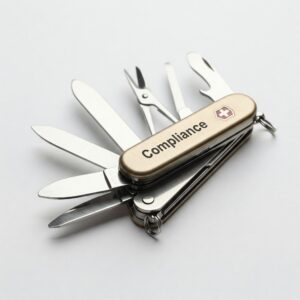In today’s fast-paced digital economy, risk management and compliance have never been more critical. As businesses scale globally and regulations grow more complex, the need for effective due diligence processes has skyrocketed. Enhanced Due Diligence (EDD) goes beyond basic Know Your Customer (KYC) practices by thoroughly investigating higher-risk clients or partners. However, traditional EDD methods are often slow, resource-intensive, and prone to human error. This is where AI-powered EDD comes into play, representing a transformative approach to managing compliance and risk.
What is AI-Powered EDD?
AI-powered Enhanced Due Diligence leverages artificial intelligence and machine learning to automate, streamline, and enhance the thoroughness of traditional due diligence. By integrating AI into this process, organizations can analyze vast amounts of data from multiple sources in real time, making it faster and more efficient than ever before.
This goes beyond merely collecting information. AI-powered systems can cross-check a broad array of data points—such as financial transactions, regulatory filings, media coverage, and social media posts—and identify patterns or anomalies that a human analyst may miss. AI can also track a merchant’s ongoing risk status by continuously monitoring changes, such as new litigation, business ventures, or even subtle signs of financial distress.
How Is AI-Powered EDD Different from Traditional EDD?
The primary difference between AI-powered and traditional EDD is speed, accuracy, and scalability. Traditional EDD is often conducted manually by compliance officers or analysts. They must painstakingly sift through documents, news articles, and reports, which can take days, if not weeks, to complete. Human analysis, while thorough, is subject to biases, fatigue, and occasional oversight, making it difficult to scale effectively as the volume of data grows.
In contrast, AI can process vast quantities of data almost instantly and provide real-time updates. It can analyze more sources, spot hidden correlations, and even predict future risks based on historical patterns. Machine learning algorithms improve over time, learning from both successful and failed detections, making them more accurate with use.
In short, AI-powered EDD eliminates the bottlenecks in traditional processes, turning what used to be a laborious task into an efficient, automated workflow.
How Can AI Change the Game in EDD?
AI-powered EDD is set to redefine how businesses and institutions approach risk management and compliance. Here’s how it can change the game:
-
Faster Decision-Making: AI accelerates the time it takes to conduct thorough investigations. Compliance teams can make informed decisions faster, reducing the risk of onboarding bad actors and increasing overall operational efficiency.
-
Improved Accuracy: AI can spot trends and anomalies across more data points than any human ever could. This improves the quality and depth of the due diligence, reducing the likelihood of overlooking critical red flags.
-
Cost Efficiency: By automating labor-intensive parts of EDD, AI reduces the need for large teams of analysts, resulting in significant cost savings for companies. This is especially beneficial for startups and SMEs that need thorough risk assessment but lack the budget for large compliance teams.
-
Ongoing Monitoring: Traditional EDD is a point-in-time analysis. AI, however, enables continuous monitoring. By keeping tabs on a company or individual in real time, AI can provide early warnings when risk levels change, ensuring that companies are not caught off-guard.
-
Global Compliance: As regulations differ from one jurisdiction to another, AI-powered EDD tools can be programmed to stay up-to-date on global regulatory requirements, ensuring that organizations comply across multiple regions without manual intervention.
Steps to Integrate AI into EDD
Now that we understand the potential of AI-powered EDD, the question is: How do we bring AI into the fold of everyday risk management and compliance? Here are a few steps companies should consider:
-
Invest in AI Training and Awareness: To successfully implement AI, organizations need to understand its capabilities and limitations. Invest in training for your compliance and risk teams to ensure they are comfortable working alongside AI tools.
-
Select the Right AI Tools: Not all AI is created equal. When choosing AI-driven solutions for EDD, ensure that the software is capable of analyzing the specific types of data most relevant to your business and industry. Look for tools that offer machine learning algorithms that can improve over time.
-
Collaboration between Humans and AI: AI should not be seen as a replacement for human analysts but rather as an enhancement. Compliance officers and risk analysts should collaborate with AI tools, using them to focus on the most critical tasks while the AI handles more routine analyses.
-
Ongoing Auditing and Testing: AI models need to be monitored and refined over time. Ensure that your systems are regularly audited to ensure accuracy and compliance with regulatory requirements.
-
Create a Culture of Innovation: Encourage your teams to embrace AI as a valuable tool rather than a threat. AI can free up valuable time for analysts to focus on higher-order tasks, such as strategic risk assessments or improving policy frameworks.
Conclusion
AI-powered Enhanced Due Diligence is more than a technological upgrade; it is a paradigm shift in how businesses manage risk and compliance. By automating repetitive tasks, improving accuracy, and enabling real-time monitoring, AI has the potential to revolutionize the way we think about due diligence.
As we look ahead, companies that successfully integrate AI into their EDD workflows will not only be better prepared for regulatory changes but will also position themselves at the forefront of innovation in risk management. AI-powered EDD is no longer a futuristic concept—it’s a present-day necessity for staying competitive in the modern world.
The question isn’t whether AI should be part of your world, but how soon you can make it happen.







